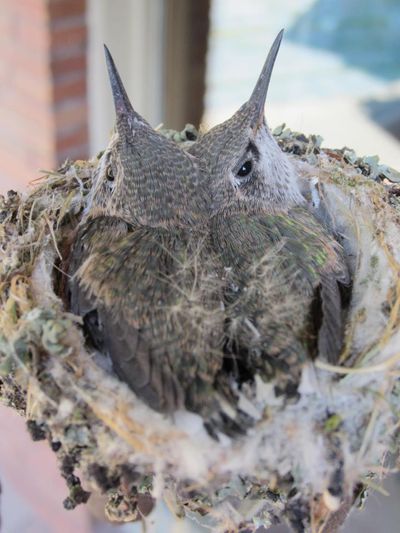Where’s the love after birds fledge from nests?

BIRD WATCHING — Bill Bender of Spokane treated his Facebook friends this summer to a 22-day photo documentary of the hatching and fledging of two hummingbird chicks. They were hatched in a nest built on a wind chime on the deck of his South Side home.
One of the birds left the nest on day 21, leaving the second chick to hang around one more day before fledging, with mamma rarely seen, he said.
Do birds form tight families that stick together through winter? Some do, including the trumpeter swans that hatch at Turnbull National Wildlife Refuge.
But species that stick together after the nesting season are rare.
Most young birds are on their own soon after they leave the nest. In fact, in many bird families, the parents migrate south long before their youngsters do, according to the National Wildlife Federation .
In the case of most species of hummingbirds, the female raises her offspring until they are out of the nest and able to feed themselves. A few weeks later, she disappears. The youngsters are left alone to fatten up for their long migratory flight to a place in the tropics where they have never been before, the federation says on its website.
They linger at the natal feeding grounds for several more weeks, sucking up as much nectar, sugar water and tiny insects as possible before heading south.
* This story was originally published as a post from the blog "Outdoors Blog." Read all stories from this blog